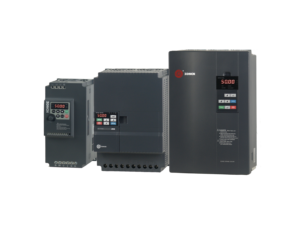Electric motors are a fundamental part of production lines, and even in our daily lives since they allow us to control a large amount of the equipment with which we interact daily.
Electric motors need a certain amount of electrical energy to do their job of providing torque and speed. The speed of a motor should match exactly what the process in question requires, and use only the necessary energy, not consuming more than necessary because we would be wasting that energy and losing work performance which in the end translates into costs.
What is a variable speed drive?
The variable speed drive is an element that is responsible for regulating the speed of electric motors so that the electricity that reaches the motor adjusts to the real demand of the application, reducing the energy consumption of the motor between 15 and 70%.
It is an industrial regulator that is located between the power supply and the motor. The power from the grid passes through the drive and regulates the power before it reaches the motor and then adjusts the frequency and voltage based on the requirements of the procedure. This reduces the power output of an application, such as a pump or fan, by controlling the speed of the motor, ensuring that it does not run faster than necessary.
The use of variable speed drives for the intelligent control of motors has many financial, operational and environmental advantages since it improves productivity, increases energy efficiency and at the same time extends the useful life of the equipment, preventing deterioration and avoiding Unexpected stops that cause downtime.
 How to choose the right drive
How to choose the right drive
When selecting a drive, it is essential to define the application for which it will be used, since the characteristics necessary to obtain the best performance from the equipment will depend on it. When deciding which inverter adapts to our needs, we will take into account the following considerations:
- Type of load:
- Variable torque. Those whose resistive torque increases or decreases depending on the speed applied. Within variable loads, there are also so-called “reverse loads”, where the initial resistive torque is very high, but once the nominal speed is reached, it drops drastically.
Some examples of variable torque loads are centrifugal pumps or fans.
- Constant torque. Those whose resistant torque remains constant at any speed regime. Some examples of constant torque loads are:
- lifting equipment (load lifting), conveyor belts or piston pumps.
- Constant power.
- Motor characteristics: Rated current and power, power factor, and motor speed (rpm).
- Operating ranges: Maximum and minimum speeds.
- Torque at start: Check that it does not exceed those allowed by the drive. If it exceeds 170% of the nominal torque, it is advisable to oversize the drive.
- Regenerative braking: High inertia loads, rapid cycles, and vertical movements require external braking resistance.
Once the different characteristics of the drive are defined, it is very simple to adjust the best solution for each process and thus extend the average life of our equipment.
It is important to highlight the wide range of applications in which variable speed drives can be found, such as ventilation systems, compressors, crushers or submersible pumps, among others.
To conclude, it should be noted that the use of variable speed drives in production lines is essential, since they extend the useful life of the equipment, allowing better use of it and therefore more sustainable. They are also a fundamental factor in energy efficiency, since the savings they make are high due to the reduction of the power peaks they generate in the equipment.